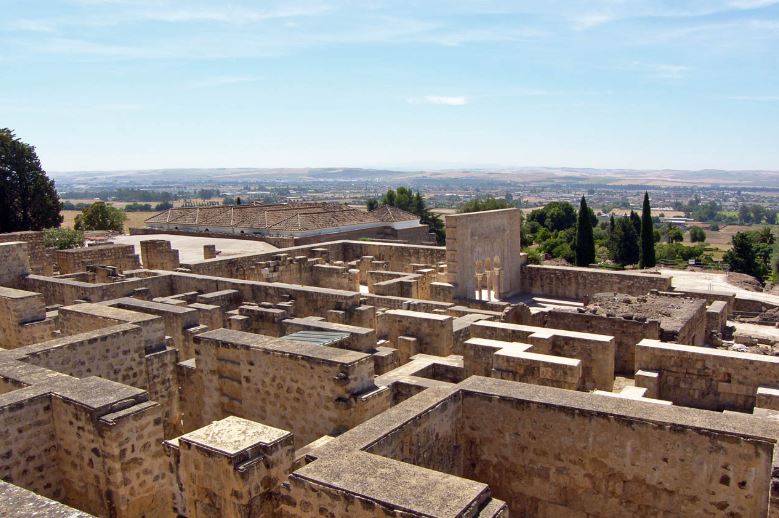
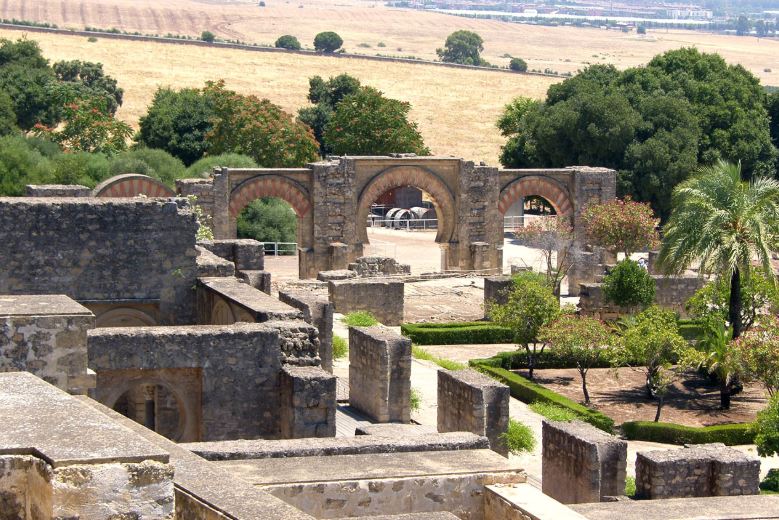
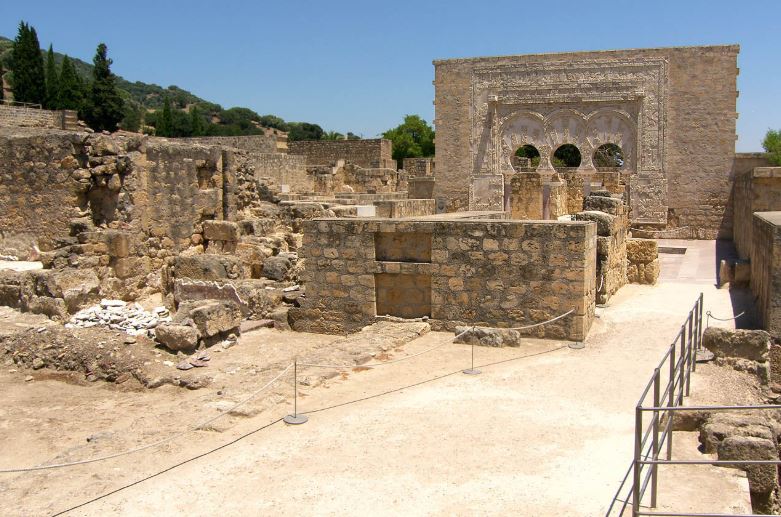
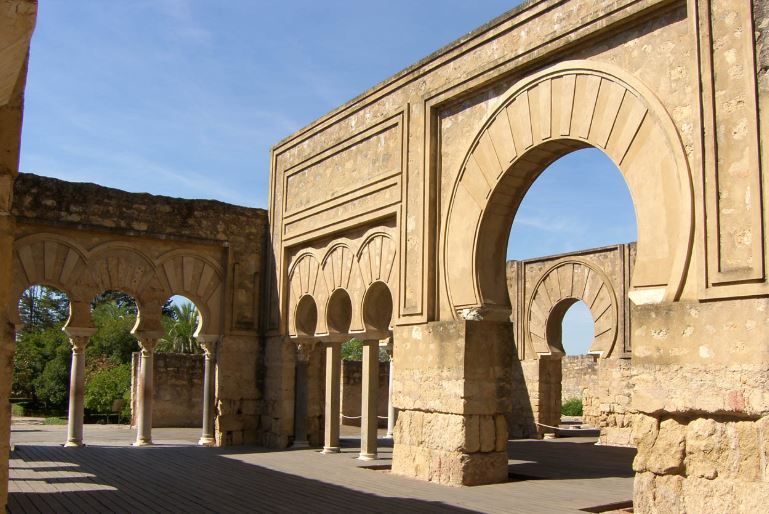
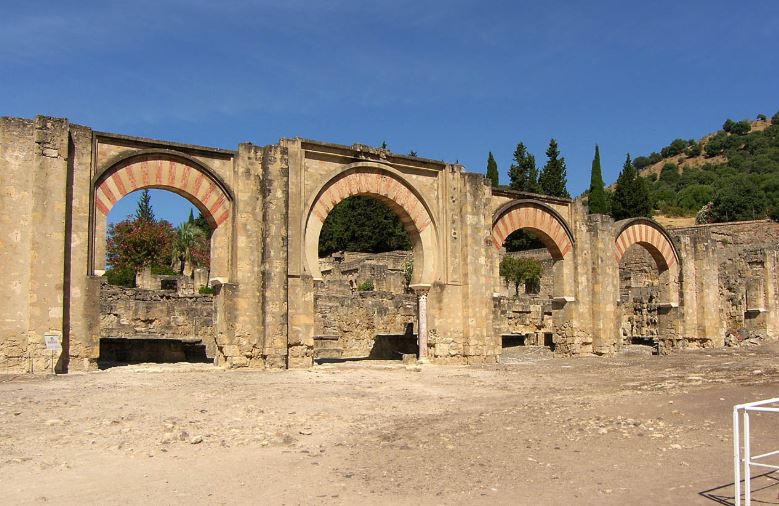
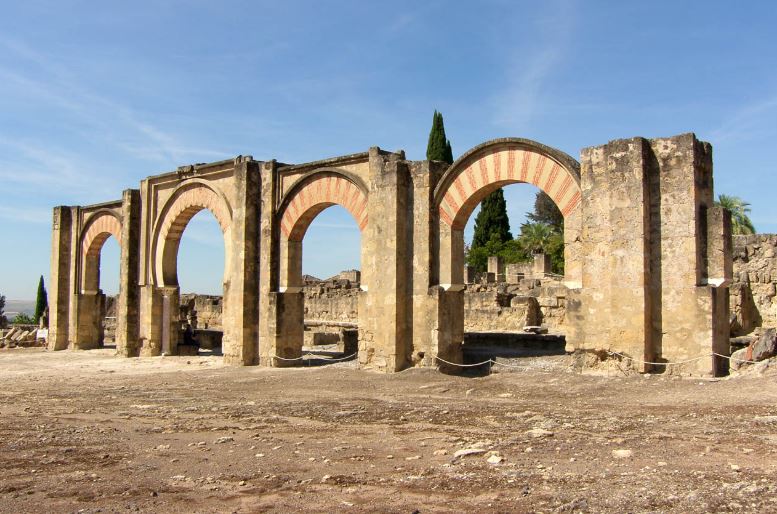
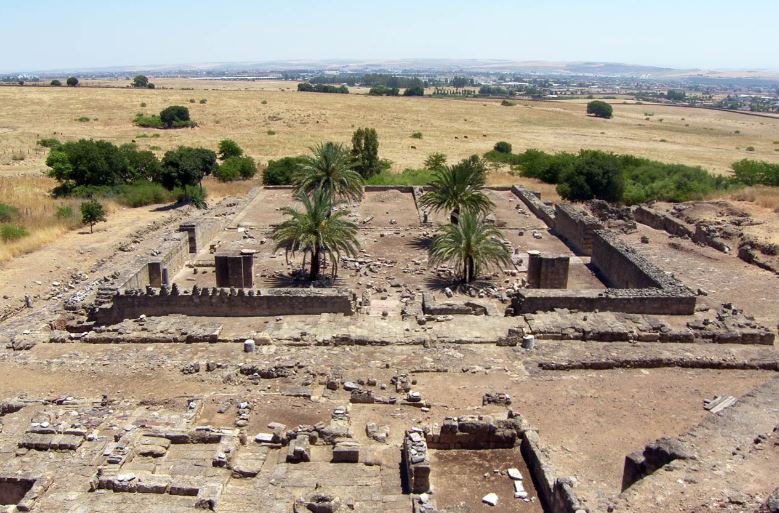
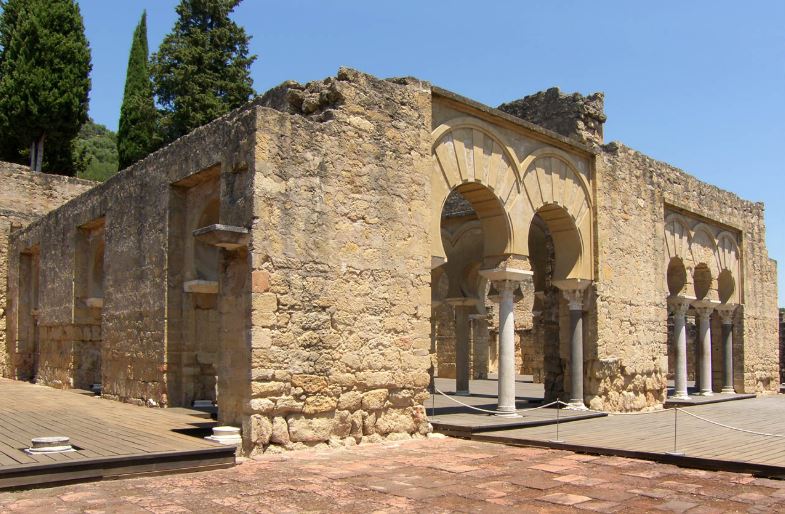
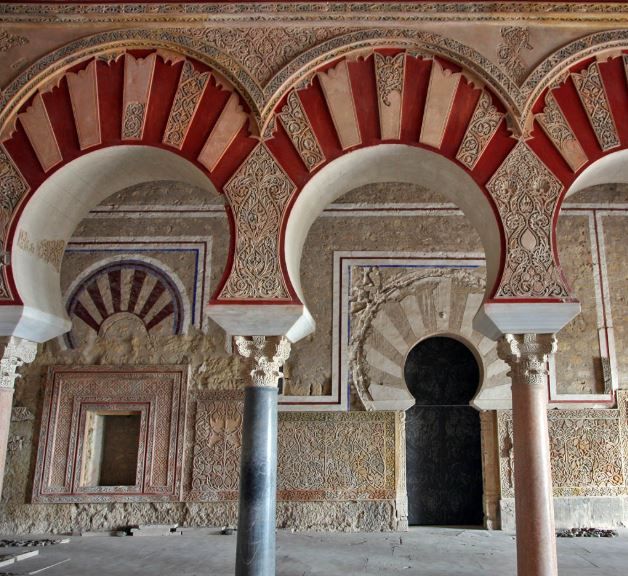
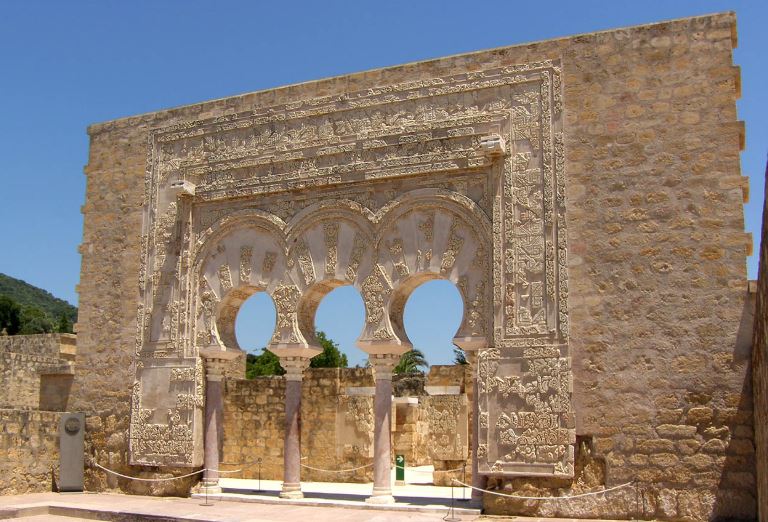
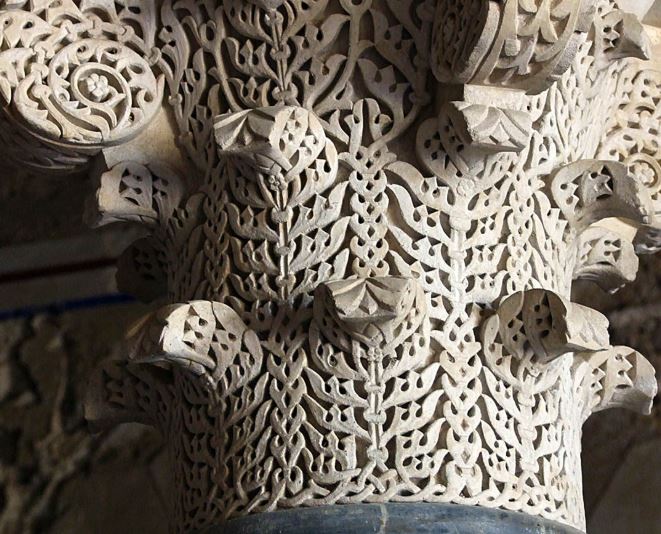
Chronology. X century
Style. Califal Art
Author. Abderramán III; Alhakan II
Description. Medina Azahara, the lavish and mysterious city that Abd-al Rahman III had built at the foot of the Sierra Morena, eight kilometres from the capital city of Córdoba, contains, even in its name, legendary stories. Popular tradition affirms that self-proclaimed Abd al-Rahman III Caliph in 929 AD, and after eight years of reign, decided to build a palatine city in honour of his favourite, Azahara. However, recent studies provide strong evidence of the cause that prompted the caliph to found Medina Azahara. A renewed image of the newly created Western Independent Caliphate, strong and powerful, one of the greatest medieval kingdoms in Europe, is accepted as the most probable origin of the new Medina. The city is arranged in three terraces surrounded by a wall, located the real Alcazar in the upper and intermediate. The lower area was reserved for housing and the mosque, built extramural. The historical sources point to the participation of some ten thousand people who worked daily in its construction. Abd al-Rahman did not skimp on materials to achieve the desired effect: the insignia of the powerful kingdom he ruled. Rich violet and red marbles, gold, and precious stones, in addition to the careful handicraft work of the best quarrymen and the legendary Byzantine contributions, helped the rise of the precious project.
Part of the fortress had a public character and was where official visits followed one another. In the highest part is the High Room, arranged in five naves with arcades. Below is the Rich Room. The room is divided into three naves with red and bluish marble arches, the lateral ones being blind and the central one open. The decoration of ataurique (carved vegetal motifs) and the richness of the materials have shaped the name of the ornate enclosure, completed with bathrooms and open to the High Garden, of great beauty. This garden is developed in four zones, leaving the point of intersection occupied by a pavilion and four pools. One of these, the one facing the Salón Rico, has passed to the legend for sheltering mercury in its interior and bathing the great room with flashes of a thousand colors. A complex of streets on a steep ramp leads us to the great oriental portico, where the large embassies that the caliph received were accessed. In front of it opened a large square where the troops and the staff of the ceremonial ceremonies were concentrated. The mosque, located in a little over a month, was located outside the medina. This solemn enclosure suffered great destruction through the successive wars that devastated al-Andalus at the beginning of the 11th century, transforming into ruins Madinat al-Zahra. The effort to create an ideal city only lasted seventy years, short-lived for what was "favorite" of the first caliph.
Schedule.
From January 1 to March 31 (Please, don't forget to check the official page to see the actualizations for COVID-19)
Closed Monday.
From Tuesday to Saturday: From 9:00 a.m. to 6:00 p.m.
Sundays and holidays: From 9:00 a.m. to 3:00 p.m.
From July 1 to September 15
Closed Monday.
From Tuesday to Saturday: From 09:00 to 15:00.
Sundays and holidays: From 9:00 a.m. to 3:00 p.m.
From April 1 to June 30
Closed Monday.
From Tuesday to Saturday: From 9:00 a.m. to 9:00 p.m.
Sundays and holidays: From 9:00 a.m. to 3:00 p.m.
From September 16 to December 31
Closed Monday.
From Tuesday to Saturday: From 9:00 a.m. to 6:00 p.m.
Sundays and holidays: From 9:00 a.m. to 3:00 p.m.
Rate us and Write a Review
Carretera Palma del Río, km 5,5, 14005 Córdoba 957 10 49 33

0 Reviews